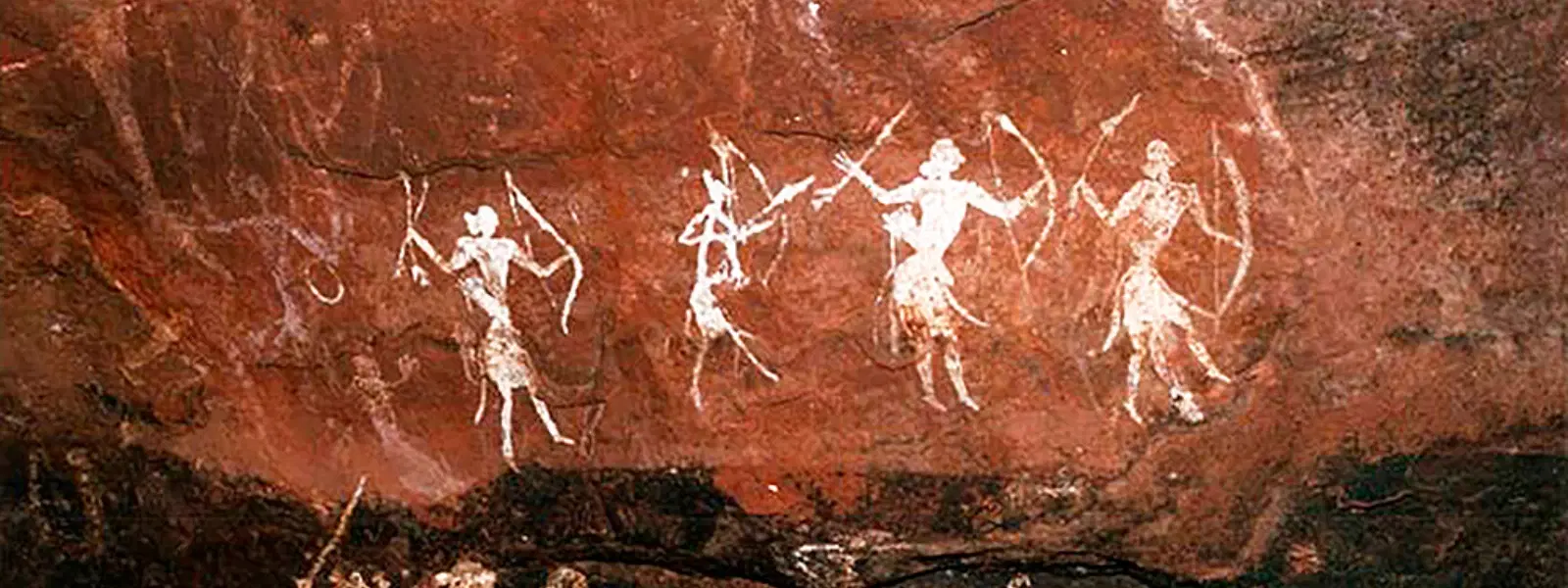
Flights
•04 min read

The Bhimbetka rock shelters paintings offer an intriguing glimpse into prehistoric life in India. Nestled in the heart of Madhya Pradesh, this UNESCO World Heritage site is home to some of the world’s oldest rock art. In this post, we explore the historical significance, themes, and techniques of these ancient paintings. Readers will gain insight into the lifestyles, rituals, and artistic evolution showcased at this remarkable Bhimbetka prehistoric site.
Located near the foothills of the Vindhya Range in the Raisen district, the Bhimbetka archaeological site is a treasure trove for lovers of prehistoric art. Recognized as a UNESCO World Heritage site, it stands as a testament to the rich legacy of early human creativity in India. The rock shelters preserve a continuous history of art that spans from the Upper Paleolithic through the Mesolithic eras, making them one of the most important sites for prehistoric rock art in India.
The paintings at Bhimbetka unfold a timeline that reflects the evolution of human expression over tens of thousands of years. Beginning in the Upper Paleolithic period, the simple, symbolic forms gradually transformed into more complex representations during the Mesolithic era. The progression from basic figures to detailed depictions of human encounters with animals and rituals reflects a growing sophistication in artistic techniques and storytelling.
Observing the rock art at Bhimbetka, one encounters a fascinating array of themes. Daily life is a recurring motif – scenes of hunting, gatherings, and ritualistic practices are vividly captured. The artists skillfully portrayed animals such as bison, deer, and elephants, often integrating abstract symbols that hint at a deeper spiritual or cultural significance. Each image provides a narrative of the prehistoric community’s connection with nature and their surroundings.
Ancient artists of the Bhimbetka cave art used natural pigments derived from ochre, hematite, and even charcoal, blending these colors with rudimentary tools to create their masterpieces. Their innovative use of natural materials allowed them to express a unique aesthetic that, while simple, evokes a profound sense of connection to the natural world. Compared to other prehistoric sites like Lascaux, the techniques at Bhimbetka highlight a localized adaptation of early artistic expressions. This approach enriches our understanding of prehistoric rock art in India and solidifies the site’s role in the broader story of human creativity.

The paintings at Bhimbetka offer an unfiltered view into the lives of ancient people. They reveal aspects of daily life, social structures, and the spiritual beliefs of the early inhabitants. These artworks are more than just aesthetic expressions; they serve as historical records, linking prehistoric rituals and communal activities with the natural phenomena that dominated their world. Exploring these images, one can sense the reverence for nature and the complexities of early human life.
As one of the oldest collections of rock art in India, the Bhimbetka rock shelters paintings play a critical role in the narrative of Indian art history. When compared to other ancient rock shelters and cave paintings in the region, Bhimbetka stands out for its extensive chronological span and depth of expression. The site remains a crucial reference point for archaeologists and art historians keen to trace the development of symbolic language and visual storytelling in prehistoric times.
The paintings include depictions of animals, human figures, hunting scenes, and abstract symbols, showcasing the daily life and rituals of prehistoric communities.
The style varies across periods, with early paintings being simple and symbolic, while later ones display more complexity and detail, including dynamic representations of human and animal forms.
Some of the paintings date back to over 30,000 years, originating in the Upper Paleolithic era and evolving through the Mesolithic and Chalcolithic periods.

Artists used natural pigments like ochre, hematite, and charcoal along with simple tools to create the detailed paintings seen on the cave walls.
Bhimbetka is situated in the Raisen district of Madhya Pradesh, India, near the foothills of the Vindhya Range.
Preservation initiatives at Bhimbetka are critical to maintaining this unique cultural legacy. Conservation efforts focus on protecting the fragile rock art from natural weathering and human-induced damage. Challenges include ensuring controlled access to the site and mitigating the impacts of environmental changes. These steps are essential to ensure that future generations can experience the wonder of these ancient artworks.
Being designated as a UNESCO World Heritage site has significantly boosted awareness about Bhimbetka. This acknowledgment not only cements its status as a vital piece of Indian cultural heritage but also encourages global tourism and academic research. The site's inclusion in UNESCO's list reiterates its importance as both an archaeological treasure and a symbol of early human ingenuity.
Did You Know? The Bhimbetka rock shelters are not just an artistic marvel but also a geological wonder. Some researchers suggest that certain caves may contain fossils of Dickinsonia, an extinct organism that dates back over 550 million years. However, this claim remains subject to ongoing scientific validation.
The Bhimbetka rock shelters paintings remain a powerful testament to the creativity and resilience of prehistoric societies. From their evolution over thousands of years to their rich thematic depth and artistic techniques, these paintings provide a valuable window into the past. The site not only deepens our understanding of early human life in India but also enriches the global narrative of artistic expression across millennia.
What are your thoughts on these ancient artworks? Share your insights in the comments below!